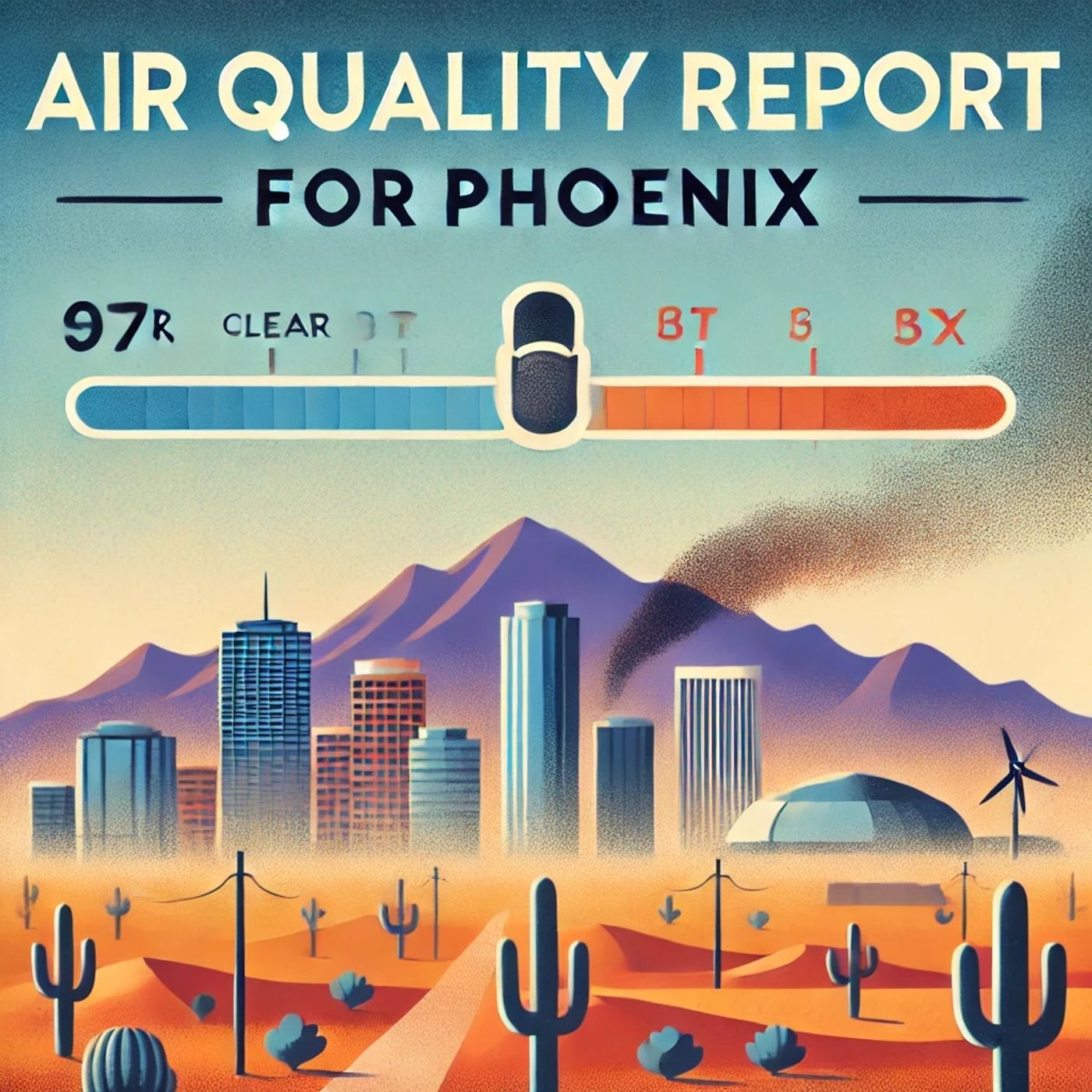Listen "Phoenix's Air Quality Challenges: Ozone, Dust, and Growth"
Episode Synopsis
I'm unable to browse the internet for real-time information, so I can't provide today's specific air quality data for Phoenix. However, I can offer some general insights into the air quality situation in Phoenix and factors that commonly influence it.Phoenix, located in the Sonoran Desert, often experiences unique environmental conditions that can impact air quality. The Valley of the Sun, as it's fondly known, is susceptible to a combination of natural and human-made air quality challenges. The primary pollutants affecting Phoenix's air are ozone, particulate matter (PM10 and PM2.5), and carbon monoxide.Ozone pollution is particularly notable in Phoenix, especially during the hot, sunny months. This form of pollution occurs when nitrogen oxides and volatile organic compounds react in the presence of sunlight. Given that Phoenix has over 300 sunny days a year, ground-level ozone can frequently exceed healthy levels. High ozone days are often correlated with respiratory issues, posing risks especially to children, the elderly, and those with pre-existing health conditions.Particulate matter, another major air quality concern, often results from a mix of dust storms, vehicle emissions, and industrial activities. The dry, desert climate makes the area prone to dust storms, known locally as haboobs, which can significantly increase PM10 levels. Construction activities and vehicular traffic add to PM2.5 concentrations, which are small enough to penetrate deep into the lungs, posing serious health risks.The Phoenix metropolitan area's rapid growth contributes to increased vehicular traffic, further impacting air quality. Though public transportation options are expanding, the city remains highly car-dependent. This reliance on automobiles not only elevates ozone and particulate levels but also contributes to carbon monoxide emissions.Efforts to combat air pollution in Phoenix include implementing stricter emissions standards, encouraging alternative transportation modes, and promoting public awareness on air quality issues. The Maricopa County Air Quality Department and the Arizona Department of Environmental Quality work together to monitor air quality, issue health advisories, and enforce regulations aimed at improving air quality.To mitigate exposure to harmful air pollutants, residents can check the Air Quality Index (AQI) regularly through the Environmental Protection Agency's website or local resources. On poor air quality days, it's advisable to limit outdoor activities, especially for sensitive groups.In summary, while I can't provide today's specific data, Phoenix faces ongoing air quality challenges primarily due to its geographic and climatic conditions compounded by human activities. Continued efforts in policy implementation and public engagement are essential to enhance the air quality and protect the health of its residents.This content was created in partnership and with the help of Artificial Intelligence AI
More episodes of the podcast Phoenix Air Quality Report - Daily
Phoenix Enjoys Excellent Air Quality Today
23/08/2025
 ZARZA We are Zarza, the prestigious firm behind major projects in information technology.
ZARZA We are Zarza, the prestigious firm behind major projects in information technology.
